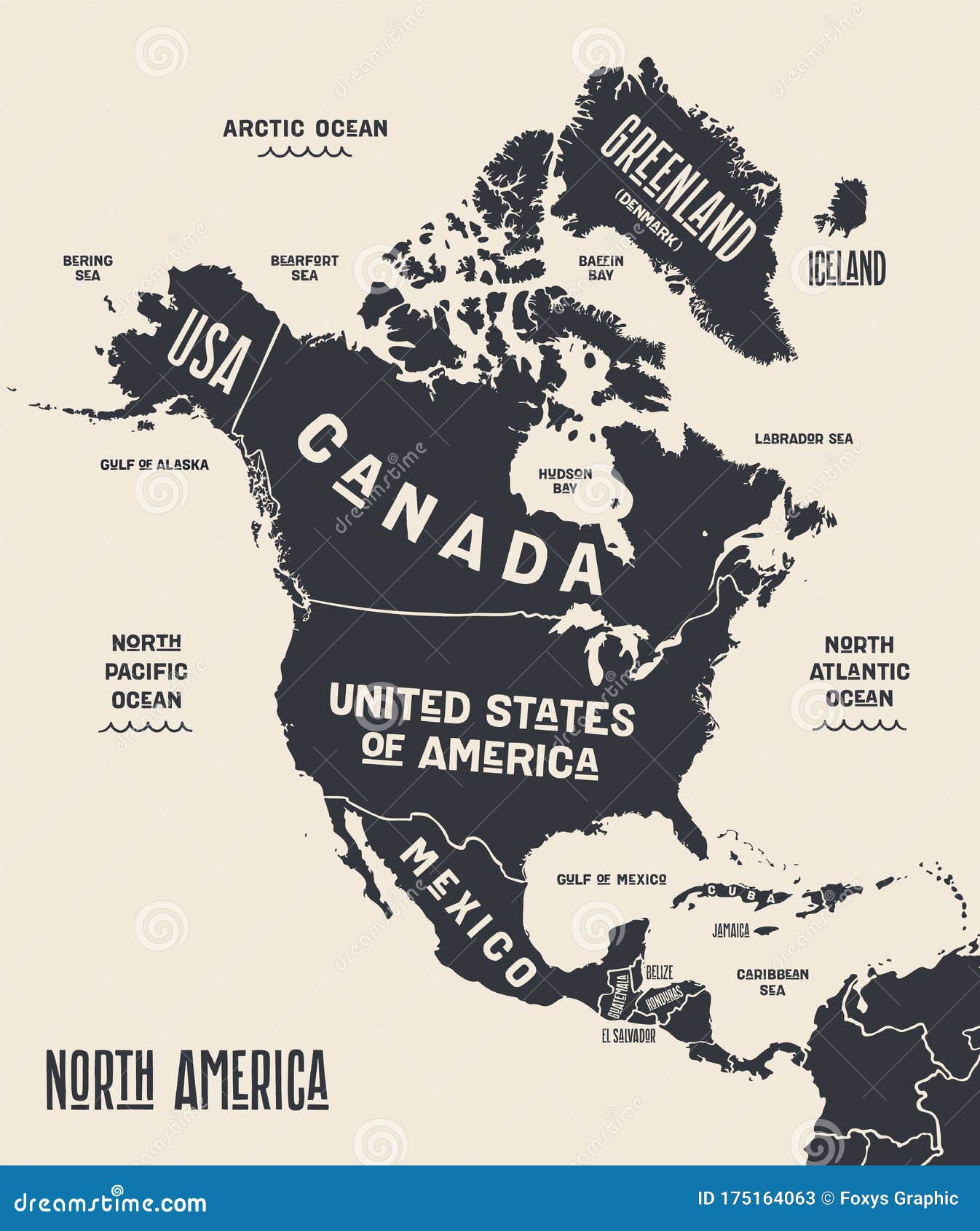In a world increasingly driven by digital maps and navigation, the allure of a physical representation remains compelling. The North America map poster encapsulates this allure, serving not merely as a decorative item but as a catalyst for contemplation and conversation. Imagine this: How often do we glance at a map and ponder the intersecting histories, cultures, and environments of the territories it portrays? Such reflections can prompt us to engage more deeply with our surroundings and inspire us to take action in the face of climate change. This piece of art can be more than a simple aesthetic addition to a wall; it can serve as a reminder of the land’s fragility.
North America is a kaleidoscope of ecosystems and geographic diversity. The continent boasts vast forests, arid deserts, majestic mountains, and sprawling urban areas. When one views a map poster, the symphony of topographical features becomes a visual narrative that beckons exploration. Each region, from the rugged coastlines of Alaska to the sun-kissed plains of Texas, has a story woven into its very soil. The juxtaposition of these landscapes invites a thoughtful inquiry into their preservation amidst rising temperatures and changing climates.
The aesthetic appeal of a North America map poster is undeniable. It can serve as an educational tool in a child’s bedroom or as a sophisticated enhancement in an office space. The representation can vary, from vintage styles that evoke nostalgia to sleek, modern designs that appeal to contemporary sensibilities. However, beyond its ornamental qualities lies the potential to educate viewers about critical environmental issues: habitat loss, biodiversity, deforestation, and climate change.
One might pose a challenging question: How can we harness the beauty of a North America map poster to promote environmental awareness? A poster can serve multiple functions, leading to discussions about conservation and sustainability. Each glance at this visual depiction can be an opportunity to reflect on human impact—both positive and negative—on the natural world. It invites conversations about local ecosystems, endangered species, and the importance of sustainable practices in everyday life.
The map can be a conversation starter, igniting interest in global issues. When placed strategically in shared spaces, such as offices, schools, or community centers, it can encourage collective responsibility. The vibrant representation of lands and territories can inspire individuals to become champions for their own regions. By nurturing environmental stewardship, we cultivate a profound respect for the land we inhabit.
Furthermore, the North America map poster can evoke a sense of belonging and identity. It can help individuals connect with their homeland, allowing for a deeper connection with local flora and fauna. Many may find themselves tracing their fingers over familiar borders—their own state or province—thinking about what makes their home unique. This emotional resonance can lead to a greater appreciation for the natural resources that surround them and the urgent need to protect them.
Consider for a moment the profound implications of such a map in our homes and workplaces. It becomes a canvas for storytelling, where each region represented has its own challenges regarding climate resilience. For instance, coastal areas face rising sea levels, while the Midwest grapples with intense droughts. By discussing these challenges, individuals can share knowledge and draw insights that lead to innovative ideas for climate action.
Moreover, when examining the artistic elements of a North America map poster, one notices that the vibrant colors and intricate details can stoke creativity. Artists and designers can draw inspiration from the landscapes depicted. This enthusiasm can be channelled into sustainable art projects or community initiatives that promote environmental consciousness. The poster can be a stepping stone towards grassroots movements aimed at conserving local habitats or revitalizing urban areas.
The educational potential of a North America map poster extends to a broader audience as well. Educators can utilize the map as a resource in classrooms, illustrating geographical concepts while integrating lessons on ecological stewardship. By instilling environmental values early on, we nurture a new generation that understands the importance of caring for nature.
There exists a transformative opportunity within this everyday object. How do we encourage the transition from passive observation of a map poster to active engagement with the environmental issues it reflects? It requires collaborative efforts to raise awareness and promote advocacy. Communities could organize events where individuals discuss their relationships with the land, perhaps igniting initiatives such as local clean-up projects or tree-planting days. Through these engagements, the map poster evolves from a decorative item to a rallying point for community action.
In summary, the North America map poster provides not just geographical information but also serves as a powerful visual tool that can inspire action. It beckons individuals to engage with their surroundings meaningfully and consider the broader implications of climate change. By fostering discussions, promoting creativity, and organizing community initiatives, this seemingly simple piece of art can become a formidable ally in the fight for environmental stewardship. Imagine placing such a poster in your space, igniting conversations, fostering connections, and inspiring change—to cherish and protect the beautiful continent of North America for generations to come.
